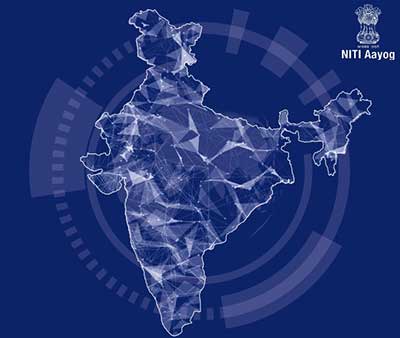Relevance: GS-2 : Government policies and interventions for development in various sectors and issues arising out of their design and implementation.
Key Phrases: Policy and decision-making, vision documents, defence reviews, security strategies, Aatmanirbhar campaign, Made in China 2025 plan.
Why in News?
- Concerns have been raised by experts as in India, piecemeal announcements are made in various sectors without a stated national vision. There is no overarching official document to guide policy and decision-making.
Keypoints:
CHINA:
- In 2015, China released a ‘Made in China 2025’ document that
envisaged a 10-year plan for development of 10 key high-tech
industries, the larger aim being to reduce dependence on foreign
technology.
- The target is to be 70% self-sufficient by 2025 and to achieve a dominant position globally by 2049, the centenary of the People’s Republic of China.
- Similarly, China’s 2019 defence white paper stated that by 2035,
the armed forces would complete the “modernisation of national defence
and the military” and by 2049, “fully transform the peoples armed
forces into world-class forces.”
- The fifth plenum of the Chinese Communist Party re-emphasised China’s goal of becoming a modern socialist society by 2049.
WESTERN NATIONS:
- These nations too, periodically release vision documents -
defence reviews, security strategies et al.
- Shell-shocked by the advances made by the USSR in space exploration in the 1950s and early 1960s, then U.S. President John F. Kennedy enunciated in May 1961 the American vision to put a man on the moon by the end of the decade.
- Scientists were given a 10-year time frame, were supported financially and they met the national goal.
INDIA:
- In contrast, India in August 2018, announced its aim of sending
astronauts into space by 2022.
- India carried out only two space launches in 2021 (of which one failed) while China set a world record of 47.
Concerns:
- India seems to announce a programme first and then go overboard with it.
- Even as the Aatmanirbhar campaign remains in the headlines, it
would only be nationalistic to ask whether everything needs to be 100%
Indian.
- It is not possible in this era of niche technologies being protected by nations, which makes international cooperation the way out.
- Though a number of projects are indeed being developed indigenously,
- For instance, advancements in the UAV and drone industry, in the private sector, are truly riveting; and radars and missiles are achievements of the Defence Research and Development Organisation.
- But, it is dangerous for the environment to be pushed into a make-believe world of faux grandeur(false magnificence) and equally hazardous that a feeling of being powerful allowed to creep in.
- Being powerful is having the ability to create and sustain an outcome.
This requires depth in a nation’s capacity to not only be
self-sufficient in focal spheres necessary for daily subsistence but to
buttress steps undertaken to project national power to safeguard national
interests.
- For instance though India is the world’s vaccine capital, but when it came to delivery, New Delhi reneged on its promise to supply COVID-19 vaccines; our ‘power’ became suspect in the eyes of our friends.
Way Forward:
- India may taken a lesson or two from China.
- While unleashing his path-breaking economic reforms in the 1980s, Deng Xiaoping asked his countrymen to “hide your capability and bide your time.”
- With single-minded conviction and a national vision of regaining China’s lost glory, all policies and actions were focused towards first augmenting national power by accretion in economic capability.
- This central direction, and monitoring, is visible even now as Beijing goes about its Made in China 2025 plan, a long-term space exploration programme, and a military technology enhancement vision.
- Clarity will emerge only when the country drafts national vision
document and put through a three-step process:
- First, adequate time should be given to experts to draft it.
- Second, the ‘Vision’ should be put through an economic and technological analysis grinder to ensure that it is a realistic national dream.
- Third, the plan should be implemented by a body of experts that has the confidence of the leadership on both sides of the political aisle; a lack of political continuum would be a non-starter for achieving the grand national vision.
Conclusion:
- Every emergency, in the country without exception (Kargil,
Mumbai 26/11, Doklam, Uri, Pulwama), has resulted in the despatch of
high-powered teams to make emergency purchases of arms and ammunition shows
that the lack of a national vision is costing us dearly; no wonder we end up
paying more in such transactions.
So, the need of the hour is to formulate an all-encompassing document to enable coherence in multi-sectoral and multi-ministerial policymaking and execution.
Source: The Hindu
Mains Question:
Q. ‘Policy Contradictions among various Ministries and departments have inhibited the real growth potential in the Country’. In this light comment on the need for national vision documents in different sectors.







